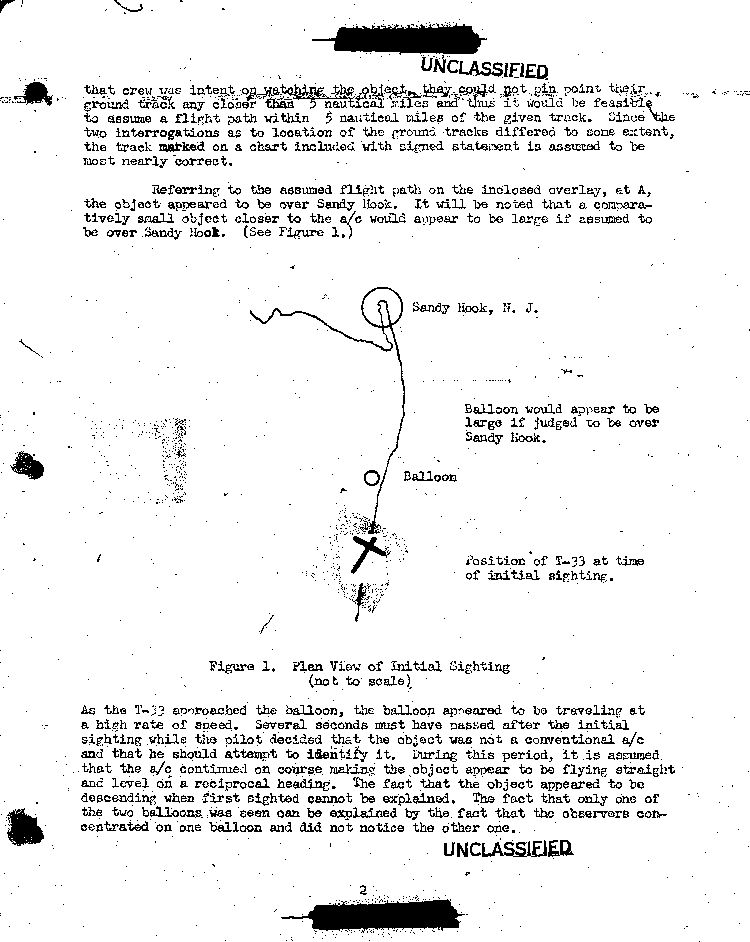1951.
1 2 3 4 5 6 7 8 9 10 11 12 13 14 15 16 17 18 19 20 21 22 23 24 25 26 27 28 29 30 31

|
that crew was intent on watching the object, that could not pin point their ground track any closer than 5 nautical miles and thus it would be feasible to assume a flight path within 5 nautical miles of the given track. Since the two interrogations as to location of the ground track differed to some extent, the track marked on a chart included with signed statement is assumed to be most nearly correct.
Referring to the assumed flight path on the inclosed overlay, at A, the object appeared to be over Sandy Hook. It will be noted that a comparatively small object closer to the a/c would appear to be large if assumed to be over Sandy Hook. (See Figure 1.)
[Figure's text from top to bottom:]
Sandy Hook, N.J.
Balloon would appear to be large if judged to be over Sandy Hook.
Balloon.
Position of T-33 at time of initial sighting.
Figure 1. Plan View of Initial Sighting
(not to scale)
As the T-33 approached the balloon, the balloon appeared to be traveling at a high rate of speed. Several seconds must have passed after the initial sighting while the pilot decided that the object was not a conventional a/c and that he should attempt to identify it. During this period, it is assumed that the a/c continued on course making the object appear to be flying straight and level on a reciprocal heading. The fact that the object appeared to be descending when first sighted cannot be explained. The fact that only one of the two balloons was seen can be explained by the fact that the observers concentrated on one balloon and did not notice the other one.
1 2 3 4 5 6 7 8 9 10 11 12 13 14 15 16 17 18 19 20 21 22 23 24 25 26 27 28 29 30 31